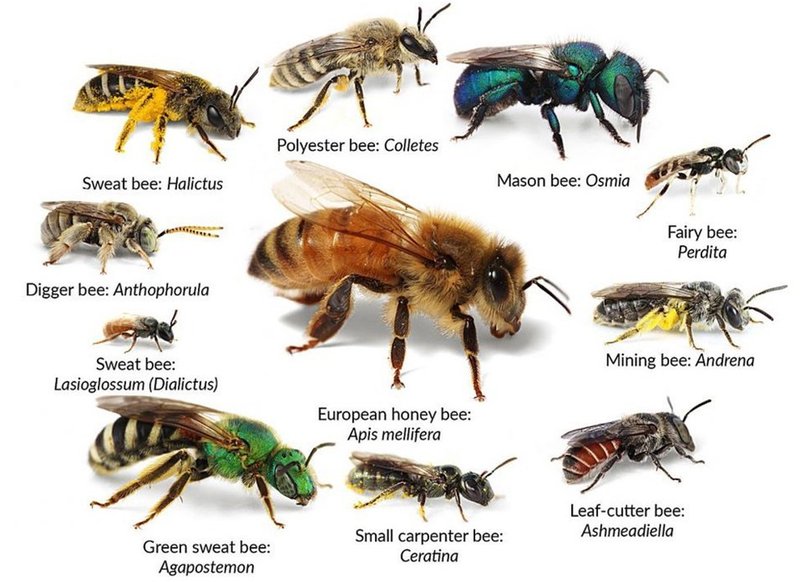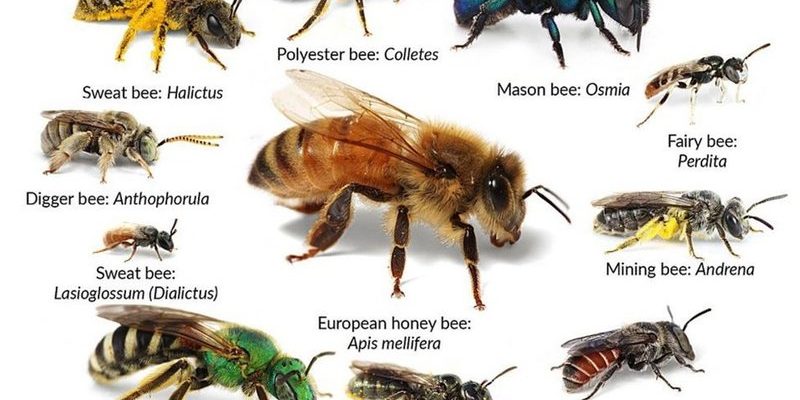
Mason bees are not just another insect flitting about—they’re incredible little pollinators that play a crucial role in our ecosystems. Unlike honeybees, which live in large colonies, mason bees prefer to live a more solitary life. They are named for their unique nesting habits, where they use mud to build their homes. Let me explain how these bees compare and contrast with their more familiar cousins.
What Are Mason Bees?
Mason bees, primarily part of the Osmia genus, are small, typically about the size of a grain of rice, and often have a beautiful metallic sheen. These bees are excellent pollinators, especially for fruit trees. They emerge early in the spring, just when the blossoms are starting to bloom, making them vital for early-season crops.
These bees are known for their unique nesting behavior. Rather than making hives like honeybees, mason bees will create little nests in hollow stems or holes in wood. They line these nests with mud—a technique that gives them their name. Each female will lay her eggs in a separate cell, ensuring that her offspring have a safe and cozy place to develop. This solitary nesting habit is one of the biggest differences between mason bees and other bee types.
How Do Mason Bees Compare to Honeybees?
When we think of bees, honeybees often come to mind. These social insects live in large colonies that can number in the thousands. Unlike mason bees, honeybees are famous for producing honey and beeswax and have a highly structured hive life. Each colony has a queen, worker bees, and drones, working together for the colony’s survival.
Here’s the thing: while honeybees are essential for producing honey, they also face numerous challenges, including habitat loss and disease. Mason bees, by contrast, are much more resilient in certain environments. Since they don’t need to maintain a hive, they can thrive in more varied spaces, which is great news for gardeners looking for natural pollinators.
While honeybees collect nectar and pollen to create honey, mason bees focus solely on pollination. They gather pollen to feed their larvae, and in the process, they help flowers grow and fruit trees flourish. If you’re looking at boosting your garden’s productivity, inviting mason bees might be the way to go!
Bumblebees vs. Mason Bees: What’s Different?
Bumblebees are another familiar type of bee, easily recognized by their larger size and fuzzy appearance. Like honeybees, bumblebees live in colonies but on a smaller scale, usually ranging from 50 to a couple of hundred bees. They too are vital pollinators but have a different approach when it comes to nesting. Bumblebees prefer to nest in the ground, often taking over abandoned nests of rodents.
In terms of behavior, bumblebees are known for their ability to “buzz pollinate.” This means they vibrate their bodies to release pollen from certain flowers, a trick that mason bees don’t perform. While both types of bees are excellent pollinators, bumblebees are more effective on larger plants because they can carry more pollen.
If you’re considering which bee to attract to your garden, it’s important to know what plants they prefer. For example, bumblebees are key for pollinating crops like tomatoes and blueberries, while mason bees thrive on fruit trees like cherries and apples.
The Nesting Habits of Mason Bees
One of the most fascinating aspects of mason bees is their nesting habits. As mentioned earlier, they build their nests using mud. Depending on the species, they might use different materials—like plant fibers or even pebbles—to create a protective barrier for their eggs.
To encourage mason bees to nest in your garden, you can create a potential home for them. You can drill holes of varying sizes into untreated wood or use hollow reeds. This simple action can provide a cozy spot for these pollinators to thrive. You might be wondering, “What if it rains?” Don’t worry! Mason bees are quite hardy and can handle various weather conditions.
Furthermore, mason bees are generally non-aggressive. They rarely sting unless they feel threatened, making them perfect companions for gardeners and those who enjoy outdoor activities.
The Life Cycle of a Mason Bee
Mason bees have a relatively short but fascinating life cycle. Once they emerge in early spring, females will immediately begin searching for suitable nesting sites. After laying their eggs, they will fill the cells with pollen and seal them shut with mud.
Each egg hatches in about a week, and the larvae will continue to feed on the stored pollen. They’ll stay in the nest for several weeks, eventually pupating and emerging as adult bees later in the season. By mid-summer, these adults will typically leave the nest to discover their own homes.
This life cycle differs significantly from honeybees, which can live throughout the year and produce multiple generations within a single season. Mason bees are typically only around for a part of the spring and summer, aligning with the blooming of many plants, which makes their role even more critical for immediate pollination.
Why Mason Bees Matter
Mason bees are crucial players in our ecosystems, especially for crop production. With the declining populations of honeybees due to pesticides and habitat loss, mason bees serve as a powerful alternative for pollination. They are particularly effective at transferring pollen between flowers, which leads to better fruit and seed production.
Moreover, they are excellent at pollinating in cooler temperatures and lower light conditions, making them invaluable during early spring when many plants begin to bloom. So, not only are they resilient, but they also extend the pollination window for many flowers and crops.
As gardeners, encouraging mason bees can lead to a healthier garden with abundant produce, colorful flowers, and a thriving ecosystem. Planting native flowers and avoiding pesticides are simple ways to create an environment where mason bees and other pollinators can flourish.
How to Attract Mason Bees to Your Garden
If you’re interested in welcoming mason bees into your backyard, there are several straightforward steps to get started:
- Provide nesting sites: Create or buy bee hotels filled with hollow tubes or wooden blocks.
- Plant native flowers: Choose a variety of flowers that bloom at different times to keep the food source available.
- Avoid pesticides: Use organic gardening methods to keep your garden safe for mason bees and other pollinators.
- Keep water nearby: A shallow dish of water can provide a drinking spot for these busy little pollinators.
By taking these steps, you not only create a welcoming habitat for mason bees but also support the overall health of your garden and local environment.
In conclusion, understanding the difference between mason bees and other bee types like honeybees and bumblebees can deepen our appreciation for these remarkable creatures. Each bee type brings its unique strengths and quirks to the table, but mason bees stand out as solitary pollinators with fascinating behaviors and vital roles in our ecosystem. So next time you spot a bee buzzing by, take a moment to appreciate the hard work they’re doing for our gardens and the planet!

